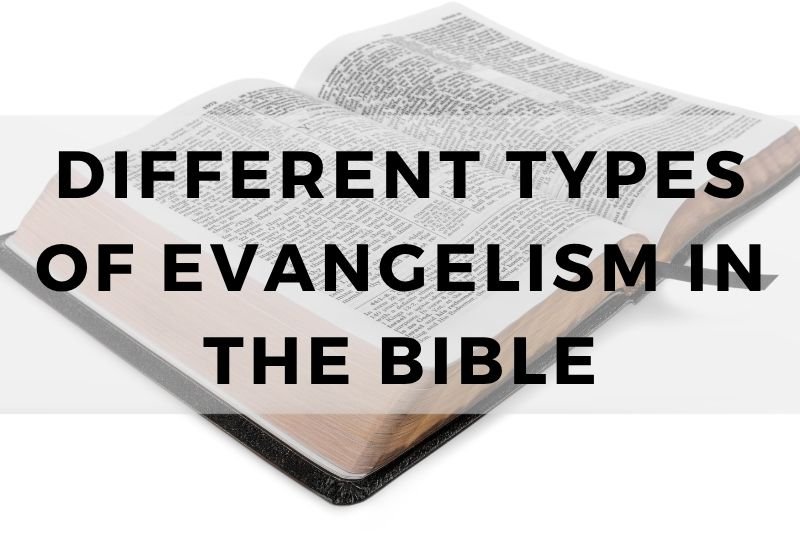
Evangelism is a core part of the Christian faith. It means sharing the good news of Jesus Christ. The Bible shows many ways this was done—by Jesus, His disciples, and the early Church. Each method served a different purpose and reached different people. Understanding these types of evangelism helps believers today share their faith more effectively. This article explores various biblical examples. It breaks down how each approach worked and when it was used. Whether one-on-one or to large crowds, each method played a role. Knowing these helps Christians choose the right approach in different situations.
What is Evangelism and Why Does it Matter?
Evangelism is the act of sharing the message of salvation through Jesus Christ. It involves telling others about who Jesus is, what He did, and why it matters. Evangelism is not just for pastors or missionaries. Every Christian is called to share the gospel in some way. This calling comes directly from Jesus in the Great Commission (Matthew 28:18–20).
Evangelism matters because it is how people come to know Christ. Faith comes by hearing, and hearing by the Word of God (Romans 10:17). Without someone sharing the message, people remain unaware of the truth. Evangelism is not about winning arguments. It’s about helping others understand the love and saving power of Jesus. When Christians take this seriously, lives are changed, families are restored, and communities are impacted.
Different Types of Evangelism in the Bible
The Bible shows us that evangelism is not one-size-fits-all. Different situations called for different approaches. Jesus and the early believers used various methods to reach people. So, let’s dive in and study some of the different types of evangelism found in the bible.
#1. Personal Evangelism
Personal evangelism is sharing the gospel one-on-one. It is direct, simple, and personal. Jesus used this method with the Samaritan woman at the well (John 4:1–26). He spoke to her privately, answered her questions, and led her to understand who He was. Philip also used personal evangelism when he met the Ethiopian eunuch (Acts 8:26–40). He explained Scripture and helped him believe in Jesus. This type is effective because it allows for honest conversation and personal connection. It often happens in daily life—at home, work, or anywhere.
#2. Public Evangelism
Public evangelism involves preaching the gospel openly to a group. Peter used this method on the day of Pentecost (Acts 2). He spoke boldly to the crowd, explained who Jesus was, and called people to repent. Three thousand people believed that day. Paul also preached in synagogues and marketplaces (Acts 17). Public evangelism reaches many people at once. It requires clarity, courage, and a clear message. It is useful in places where large groups gather.
#3. Relational Evangelism
Relational evangelism focuses on building genuine relationships. The goal is to earn trust and then share the gospel. Jesus often ate with sinners and tax collectors (Luke 5:29–32). His relationships opened doors for truth. This method is about walking alongside someone over time. It involves listening, caring, and being present. Relational evangelism is often slow but deep. It is especially effective with friends, coworkers, and family members. It works well in settings where trust is essential.
#4. Lifestyle Evangelism
Lifestyle evangelism is about living in a way that reflects Christ. It shows the gospel through actions before words. Jesus said to let your light shine before others (Matthew 5:16). This method includes honesty, kindness, patience, and humility. People are drawn to a life that reflects something different. Lifestyle evangelism creates curiosity. It often leads to questions and conversations. Though not enough on its own, it supports verbal sharing of the gospel. It’s most effective when actions match the message.
#5. Mass Evangelism
Mass evangelism involves reaching very large crowds at once. Jesus used this method during the Sermon on the Mount (Matthew 5–7). He taught thousands about the kingdom of God. Today, this method includes crusades, rallies, or televised events. In the Bible, mass evangelism usually included clear teaching and a call to respond. It reaches people quickly and in large numbers. However, follow-up is important to help people grow after believing. Mass evangelism is powerful but requires organization and support.
#6. Testimonial Evangelism
Testimonial evangelism is sharing how Christ changed your life. It is personal and hard to argue with. The blind man in John 9 simply said, “I was blind but now I see.” Paul often told the story of his conversion (Acts 22, Acts 26). Testimonies show the power of God in real lives. They make the gospel feel real and relatable. This type encourages people who feel their story doesn’t matter—it does. Every believer has a testimony that can lead someone to Christ.
#7. Prophetic Evangelism
Prophetic evangelism involves sharing a message from God that speaks directly to a person’s situation. Jesus used this when He told the Samaritan woman about her past (John 4:17–18). It opened her heart to the truth. This method requires sensitivity to the Holy Spirit. In Acts 13, Paul was led by the Spirit to confront and speak truth in a powerful way. Prophetic evangelism is not fortune-telling. It’s about revealing truth that points someone to Jesus. It must always align with Scripture.
#8. Hospitality Evangelism
Hospitality evangelism uses meals and welcoming spaces to share the gospel. Jesus often ate with people, including sinners (Luke 19:5–10). He used hospitality to build connection and offer salvation. The early Church also met in homes, breaking bread and teaching (Acts 2:46–47). Inviting someone to your home can be powerful. It creates a setting of peace and openness. Many are more willing to talk about faith over a meal than in a formal setting. This method is simple but impactful.
#9. Service Evangelism
Service evangelism shows the love of Christ through acts of service. Jesus healed the sick, fed the hungry, and helped the poor. These acts opened people’s hearts to hear the truth. In Acts 9, Dorcas was known for helping others, and her life brought glory to God. Serving builds trust and opens doors for the gospel. It includes volunteering, helping neighbors, or supporting someone in need. When paired with the message of Christ, service becomes a witness to God’s love.
#10. Written Evangelism
Written evangelism uses words on paper or digital platforms to share the gospel. The Bible itself is the greatest example. Paul’s letters taught, corrected, and encouraged churches. Today, people use books, blogs, tracts, and social media to reach others. Written words can travel far and reach people you may never meet. This method is good for those who communicate best through writing. It is effective when the message is clear, biblical, and points to Christ.
Closing Thoughts
Evangelism in the Bible took many forms. From personal conversations to public preaching, each method served a unique purpose. The goal was always the same—to lead people to Christ. Today, believers can learn from these biblical examples and apply them in modern contexts. Not every method fits every person or situation. But every believer can find at least one approach that works for them. Evangelism is not about technique; it’s about faithfulness. God uses willing hearts, simple words, and everyday actions to reach the lost. When done with love and truth, evangelism becomes a powerful tool in God’s hands.
